
Bolívar is one of the 23 states of Venezuela. The state capital city is Ciudad Bolívar and the largest city is Ciudad Guayana. Bolívar State covers a total surface area of 242,801 km2 (93,746 sq mi) and as of the 2011 census, had a population of 1,410,964. The state contains Angel Falls.
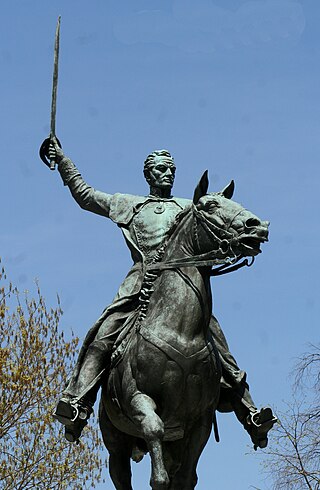
The military and political career of Simón Bolívar, which included both formal service in the armies of various revolutionary regimes and actions organized by himself or in collaboration with other exile patriot leaders during the years from 1811 to 1830, was an important element in the success of the independence wars in South America. Given the unstable political climate during these years, Bolívar and other patriot leaders, such as Santiago Mariño, Manuel Piar, José Francisco Bermúdez and Francisco de Paula Santander often had to go into exile in the Caribbean or nearby areas of Spanish America that at the moment were controlled by those favoring independence, and from there, carry on the struggle. These wars resulted in the creation of several South American states out of the former Spanish colonies, the currently existing Venezuela, Colombia, Ecuador, Peru and Bolivia, and the now defunct Gran Colombia.
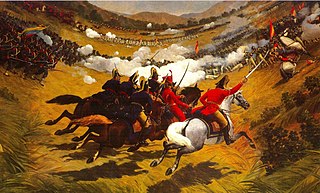
The Venezuelan War of Independence was one of the Spanish American wars of independence of the early nineteenth century, when independence movements in South America fought a civil war for secession and against unity of the Spanish Empire, emboldened by Spain's troubles in the Napoleonic Wars.

Manuel Carlos María Francisco Piar Gómez was General-in-Chief of the army fighting Spain during the Venezuelan War of Independence.

Municipalities of Venezuela are subdivisions of the States of Venezuela. There are 335 municipalities dividing the 23 states and the Capital District.

Santiago Mariño Carige Fitzgerald, was a nineteenth-century Venezuelan revolutionary leader and hero in the Venezuelan War of Independence (1811–1823). He became an important leader of eastern Venezuela and for a short while in 1835 seized power over the new state of Venezuela.
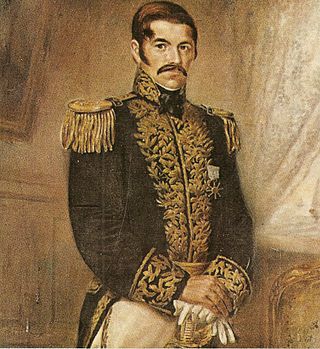
Felipe Luis Brión Detrox was a military officer who fought in the Venezuelan War of Independence. He rose to the rank of admiral in the navies of Venezuela and the old Republic of Colombia.
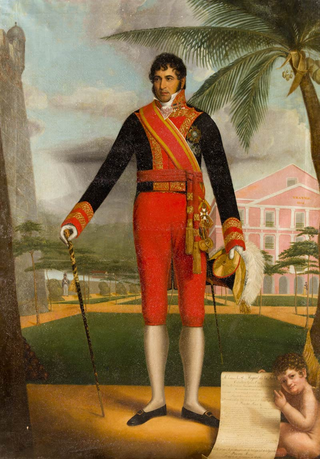
Miguel de la Torre y Pando, conde de Torrepando was a Spanish General, Governor and Captain General, who served in Spain, Venezuela, Colombia and Puerto Rico during the Spanish American wars of independence and afterwards.
The First Battle of Carabobo (1814) was a battle in the Venezuelan War of Independence, in which the forces of the Second Republic, commanded by Simón Bolívar, defeated the Spanish forces under Field marshal Juan Manuel de Cajigal y Martínez.
The Battle of San Félix was an engagement in the Guayana campaign of the War of Independence of Venezuela, that occurred on 11 April 1817, on the mesa of Chirica in Province of Guayana, over the course of just half an hour.
The Battle of Niquitao was a part of the Venezuelan War of Independence which took place on 2 July 1813 in Boconó.
The Battle of Urica took place during the War of Venezuelan Independence in the village of Urica on 5 December 1814, between the forces of Republican general in chief José Félix Ribas and Royalist caudillo José Tomás Boves. Although Boves died, the Royalists won the battle.
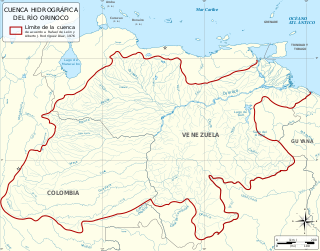
The Orinoco Basin is the part of South America drained by the Orinoco river and its tributaries. The Orinoco watershed covers an area of about 990000 km2, making it the third largest in South America, covering most of Venezuela and eastern part of Colombia.

The American Confederation of Venezuela was an unrecognized state located in the Captaincy General of Venezuela of the Spanish Empire, which was organized by Venezuelan patriots following the Venezuelan Declaration of Independence.
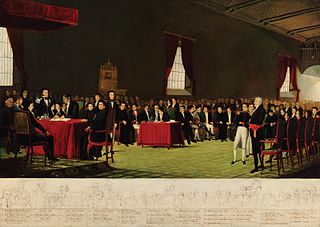
The Venezuelan independence was the juridical-political process that put an end to the ties between the Captaincy General of Venezuela and the Spanish Empire. It also implied the replacement of the absolute monarchy by the republic as the form of government in Venezuela.
The Battle of Clarines took place during the Venezuelan War of Independence. Royalist forces attacked a north-bound force from the Third Republic of Venezuela near the town of Clarines. The outnumbered and poorly armed Royalists secured a victory against the Patriot rebels.
The First Battle of Angostura took place during the Venezuelan War of Independence. The battle saw Patriot forces attempt to capture the city of Angostura, but retreat after being unable to penetrate Spanish defenses.
The Fifth Battle of Maturín was a military confrontation on 11 December 1814, that resulted in the epilogue of the Second Republic of Venezuela. The Royalist forces, which for two years had tried to conquer the city, destroyed the last great Patriot garrison that remained in the country.

Manuel Cedeño was an officer of the Venezuelan Patriot army who reached the position of Division General, who distinguished himself in the Venezuelan War of Independence.
The Battle of Pagallos, or, alternatively Pagayos, was a battle on 8 July 1817 during the Venezuelan War of Independence. In the battle, ships under Antonio Díaz carrying materiel to Simón Bolívar's Patriot army were attacked by eleven Royalist ships in the Orinoco, near the island of Pagallos. Patriots took heavy losses but successfully forced Royalists out of the Orinoco.












